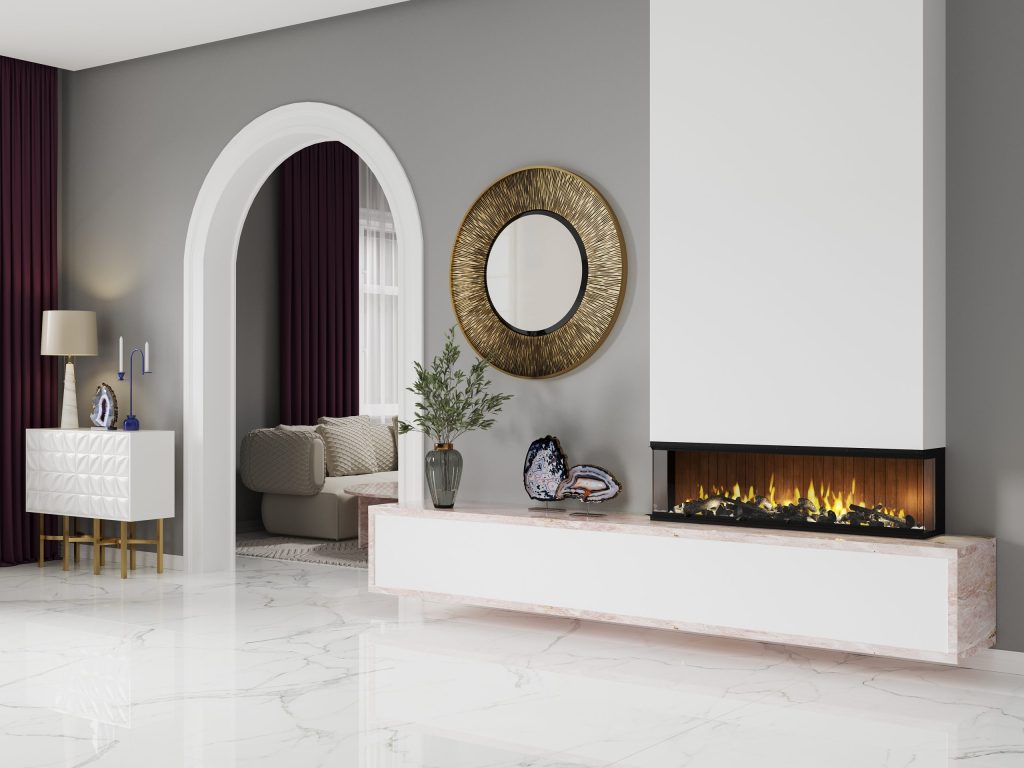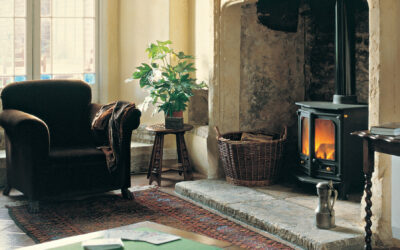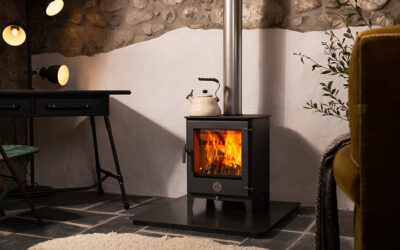Gas fires balance the beauty of an open flame with the practicality of burning gas instead of wood or coal. They deliver the same warmth and serenity as an open fire with none of the preparation or cleaning up afterwards.
If you’re considering having a gas fireplace installed, you’re not alone. Gas fires are one of the most popular upgrades for modern homes. If you don’t already have an open fire, you can have all the benefits with few of the downsides by using gas.
We would always recommend having a gas fire and fireplace installed by Gas Safe engineers but if you want to know what happens, this post is for you.
We’ll outline what goes into installing a gas fireplace, how to plan for one and what you need to consider.
Planning your gas fireplace
As with most projects, you should spend more time planning than actually doing. Time spent here is a genuine investment and can save time, effort and money when it comes time to get the experts in.
The type of gas fire
The type of gas fire should be considered alongside location, as the two are closely tied.
There are several types of gas fire including, wall hung, inset multi-flue, inset wall, inset flueless, full depth and high efficiency.
Each will have slightly different requirements for installation and will lend themselves well to particular locations.
Consider the shape, style, heat output for size of room, complexity of installation and flue into your thinking.
There are two main types of gas fire, direct-venting fireplaces and vent-free fireplaces.
Direct-venting fireplaces – Most common type of gas fire with a metal flue coming out the back and going up the chimney or through the wall to a vent.
Vent-free fireplaces – Newer types of gas fire that are so efficient that they don’t need a vent.
Direct-venting fireplaces will need installation on an outside wall or within an existing fireplace for the vent. That vent can then either go through the wall to the outside or be vented up the chimney.
Vent-free fireplaces offer more freedom in placement but require more thought around venting the room.
Location, location, location
Your next task is to decide where you want your gas fireplace. Are you converting an open chimney to gas? Have a large blank wall you want to add a feature to? Do you want an inset gas fireplace built into the wall? A free standing fire in a corner?
Your choice of gas fire will inform placement so they should be taken together.
If you’re planning to convert an open fireplace, the fire you buy should be measured so it fits inside the recess, or so it stands in front on a fireproof floor.
Gas pipe installation
Depending on the age of the house, fitting the gas pipe can be the most time-consuming and most expensive part of the job.
Gas pipes can only be installed and connected by a Gas Safe registered engineer and we strongly discourage non-professionals from doing it. There are both safety and legal reasons for this.
Depending on the location, type of fire and any existing gas pipe, you may need an entirely new pipe installed from your mains gas connection to where the fire will be.
Installation can involve removing floorboards, chasing into walls and replastering, or leaving the pipe visible. Much will depend on what’s there, your desired look and the property, so will require an initial survey.
How gas fireplace installation works
Exactly how gas fireplace installation works depends on the situation. We’ll outline two common installation scenarios so you can see what’s required.
New gas fireplace installation
New gas fireplace installation is fairly straightforward. We identify a suitable site for the gas fire, typically on an external wall if one is available.
We then identify where the gas line can run with minimal disruption or visibility. This can include running it under floorboards or outside depending on the situation.
We install the gas pipe so it’s ready for connection. We then install the flue if there is one, usually by drilling a hole in the wall to install the flue and external vent.
We then attach the gas fire to the wall, connect it to the flue and to the gas pipe. We would then perform an initial inspection to make sure all connections are sound.
Finally, we would connect the gas pipe to the mains and perform tests to ensure no leakage and adequate gas supply to the fire.
Once satisfied, we can sign off the work and give you the certificate.
Installing a gas fire in an existing fireplace
Converting an open fire into a gas fire is the other common scenario we see. It uses a similar setup to a new installation, with some minor adaptations.
Depending on the size of the fireplace and the gas fire, we may need to expand the opening and/or use a liner. Open fires were designed to handle flames and heat, not gas so a co-linear liner will likely be required.
If any adaptation is required, filling, plastering or making good may be required for aesthetics. As might adding a new fire surround to complete the look.
A co-liner is a simple installation that may require a vent be put through the wall to the outside or a liner run up the chimney to the chimney pot.
A gas line will need to be run in the same way as for a new installation. Under floorboards, outside the wall or be chased into the wall depending on the situation.
The fire, co-liner liner and flue will all be installed at the same time and sealed according to the manufacturer’s instructions.
We would then connect the gas pipe to the fire, check all connections and make sure everything is ready for gas.
We then connect the gas pipe to mains gas connection, test everything and then turn on the gas. We would run continuous tests for leakage while the new pipe pressurises.
Finally, we would test the gas fire, test ignition, test for emissions and sign off the new gas fireplace.
There is obviously a lot more to installing a new gas fireplace but that’s the basics of how it all works. The specifics depend entirely on where the fire is being installed, the type of fire being installed and the property itself.
Remember, installing a gas fire should only be undertaken by Gas Safe engineers. That is a legal requirement. This is not a job for DIYer’s no matter how good you are!
If you like the idea of having a lovely gas fire, consult the experts. It’s the only way to go!




